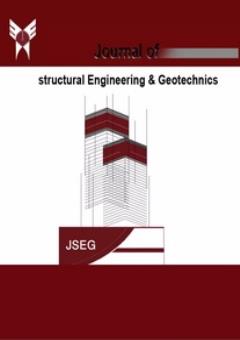-
-
List of Articles
-
Open Access Article
1 - Stress Analysis of the Scoliosis Disorder.
Fatemeh Nori Seyed Hooman Ghasemi -
Open Access Article
2 - Evaluation of Nonlinear Dynamic Response of Rigid and Semi-Rigid Steel Frames under Far-Field Earthquake Records
Fariborz Tooll Gulani Ali Anvarsamarin -
Open Access Article
3 - Effect of Partial Replacement of Crushed Aggregate with Natural Sand on Mechanical and Rheological Properties of Self-Compacting Concrete
Hamidreza Amini Jamal Ahmadi Behzad Saeedi Razavi Mehdi Babaei -
Open Access Article
4 - Experimental Investigation of Mechanical Behavior of Improved Marly Soil Using Nano Calcium Carbonate
Ali Ohadian Mehdi Mokhberi -
Open Access Article
5 - Mechanical Properties of Low Strength Concrete Incorporating Carbon Nanotubes
Meysam Morsali Reza Farokhzad -
Open Access Article
6 - 3D Analysis of Improved Soft Ground with a Group of Floating of Stone Columns Laid on the Appropriate Bed
Mohammad Shabani Mehdi Hatami Hasan Golmaee Saman Arechi
-
The rights to this website are owned by the Raimag Press Management System.
Copyright © 2021-2025







